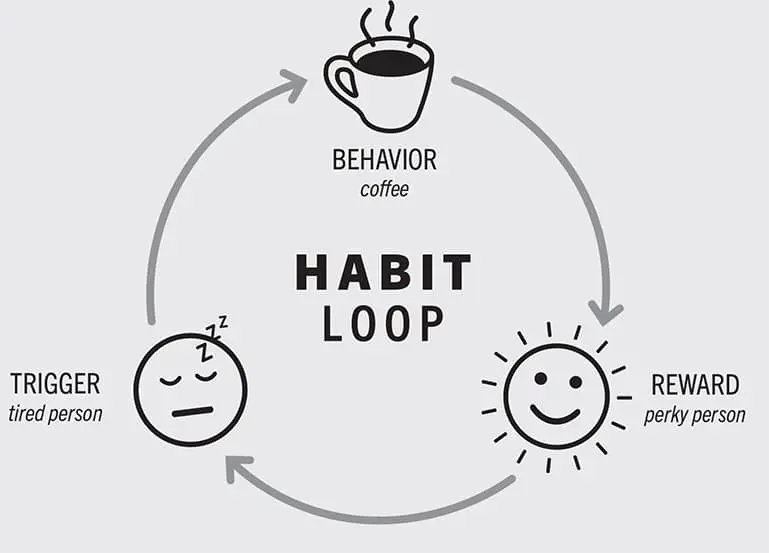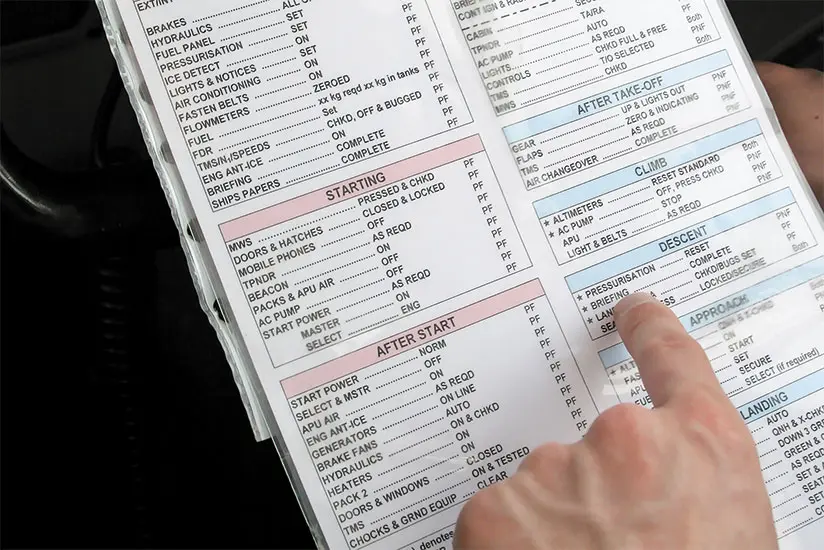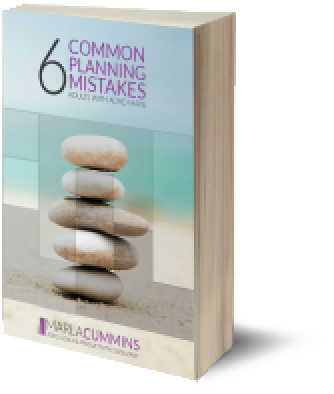Why Adopting Habits And Routines Is Hard For ADHD Adults (Part 1 of 2)

You’re reading this article because you want to get better at adopting and maintaining habits and routines, right? Maybe it’s been a struggle so far.
I hope you won’t give up. Because, though I likely don’t know you, I think that as an ADHD adult, you can adopt those habits and routines that really matter to you. And get back on the horse when you inevitably fall off for a bit.
You probably just haven’t found the right strategies yet. I’ll get to those in Part 2.
For this post, though, I want to make sure you first know why it might be so hard for you to adopt strategies and routines.
Why ADHD Adults Want to Adopt Habits and Routines
No doubt, trying to adopt habits can definitely be a chicken-and-egg problem for ADHD adults.
That is, your ADHD makes it hard to adopt and maintain any structure, including habits and routines.
Yet, as you also know, the right structures can help you be effective with ADHD, as the structure of routines and habits can help you to create the order that does not come naturally to you.
And this order can make it easier for you to do everything from daily tasks to demanding work projects because:
- You are purposefully deciding where to focus your attention.
- The routines/habits can help pull you forward like a magnet.
- You may also be able to resist the pull of immediate gratification better.
- It will be easier to persist when the behavior becomes more automatic.
- You will have an easier time remembering your intentions.
The key is to decide, based on your needs and preferences, what kind of routines or habits you really need. There’s no magic number to this.

How Habits Form for ADHD Adults
A habit, as you know, is a learned link between a cue and a response that, after repetition and reward, tends to trigger the response automatically when the cue occurs.
For this to happen, you need to encode the rule (if, then) into your memory so you recognize it later. Then, when the cue shows up, you need to retrieve the correct response.
The cues that prompt the responses are habit triggers, which generally fall into one of the following five categories and may look like this:
- Location or physical place: You walk into your kitchen and may often grab a snack.
- Time: At 3 PM, just as your energy dips, you start scrolling the internet.
- Emotional state: When you are stressed about work, you double down on your work even though maybe you really need a break and aren’t really being productive.
- Other people: When you are with people, family/friends, you are comfortable with, you relax and let work slide.
- Preceding action: You open your laptop and check your email.
And research says habit formation takes between 18 and 254 days, with 66 days seeming to be the sweet spot. I know, that’s a long time, right? 😏
How Routines Form For ADHD Adults
Whereas a habit involves one or more cues → behavior → reward, a routine is initiated by a plan. And you might use your calendar, a note, a checklist, an app or some other tool to help you remember the routine.
It relies on conscious intention and planning to initiate a behavior, not a cue, as is true with a habit.
And routines can also help create that repetition needed to form habits by
- Putting instructions in the environment (checklists, calendar, etc.)
- Cutting down choices at the start.
- Reducing competition from other stimuli.
When a routine runs often enough, a single step inside it can begin to feel automatic and that step may become a habit.

Why Your ADHD Makes It Hard To Form Habits
We know ADHD adults are prone to wanting immediate gratification. So, 18 to 254 days, with 66 days being the average, is a long time for you to persist in trying to cement a behavior.
Also, because of other ADHD symptoms, which I’ll cover below, the encoding and retrieval necessary to form habits are less reliable for ADHD adults.
Let’s take the example of taking your meds consistently. Obviously, this might lend itself to a habit. So if taking your medication has been a challenge, I’m sure you tried to make it a habit.
Let’s say you decide to take your meds when you set up your coffee in the morning, as in the example below, vs how your neurotypical friend fares.
The intention: After I set up the coffee maker, I will take my meds.
Encoding, neurotypical version: They say that exact sentence while actually looking at the mug. The cue is stable, same coffee maker, same counter. They are paying attention, so the brain is able to store a very specific pairing.
The first few mornings, they notice the cue, do the step, and that clear pairing gets reinforced.
Encoding, ADHD version: You may form the intention while half attending, maybe while skimming an email. The wording is looser, something like, I will take my meds with coffee.
The morning scene is noisy: phone pings, toddler questions, dishes in the sink. The brain stores a fuzzy pairing: coffee equals meds, but there is no single image or phrase to grab.
Competing thoughts and stimuli intrude more, so the cue has to win a tougher battle for control. The cue, pairing, never really gets encoded.
Retrieval, neurotypical version: Three weeks in (maybe), the moment they hit the start button of the coffee maker, their hand reaches for the pill case. The cue retrieves the rule quickly because the stored cue is specific and strong, and there is not much competing for attention at that instant.
Retrieval, ADHD version: Let’s say you did encode the cue.
But when the same cue appears (coffee maker), two other cues arrive at the same time: the smell of coffee and an email notification. Those have more pull.
Your working memory is already full, thinking about what the day holds, so the thought of the meds, yes, gets pushed out. The coffee maker cue fails to retrieve the script – take meds.
So, you enjoy your coffee and move on.
Since reps (cue → behavior) are inconsistent, the habit never strengthens.
Friction Points When Trying To Start A New Habit or Routine With ADHD
Here’s how it may play out in the example of wanting to form a habit of planning your day first thing in the morning.
You decide to put the time to plan in your calendar, thinking that will ensure you’ll do it. Right. And you look at the calendar each morning, see the planning block of time and… Nada.
One friction point might be that this new habit is competing with an old habit, like checking your email first thing in the morning, that you need to drop in order for the new one to take hold.
There are many reasons you may start your morning this way, which I cover in my blog series on email and ADHD. And, if this is one of your habits, it might be hard to drop because by now you’re probably pretty hard-wired to do this.
Also, some days, you may forget the reason or reward for following through on your commitment to this new routine, planning your day, because of your memory challenges.
And, even if you do remember, either because of impulsivity or lack of interest, you may be pulled to whatever is more interesting and right in front of you. So you end up switching tasks quickly, regardless of the cue or reminder in front of you.
For example, maybe you decide to quickly check for urgent emails before doing your planning. Makes sense. But you see an email about ebook deals and you’re curious, of course. So you think, “I’ll just open it up and look for a second.”
You open it up and see a book that you’ve been meaning to read. 10 minutes later, you’re pondering, “Should I just get it? It’s such a good deal, or should I get it from the library or…”
Now you’re in deep and you’re having a hard time transitioning back to your intention, which was just to check for any urgent emails and then do your planning. Oops, you got distracted.
Okay, you got through your email.
And now you’re going to attempt to do your planning for the day, which you were hoping would only take you about 15 minutes or less. You try to start.
But it feels like it’ll take forever (thanks to time blindness), and you have a lot of work to do, right?
Maybe it also feels just too hard to decide what to do and in what order. Your challenges with emotional regulation may contribute to this.
In the end, you get overwhelmed and, well, give up. So you decide to put it off, procrastinate, and do it later. Right, later.
The Support You Need to Adopt Habits and Routines With ADHD
I know for some of you, after reading the above may feel like it’s just not possible for ADHD adults to adopt habits and routines.
That’s not true.
You just need to discover the right support, including tools, people, processes, mindsets, etc., to make it possible. Understanding why it is so hard for you right now will help you do this.
In Part 2, I’ll introduce some options to make it possible to adopt the habits and routines that are most important to you to reach your goals and support your values.
(originally published October 20, 2011, updated November 3, 2025)
